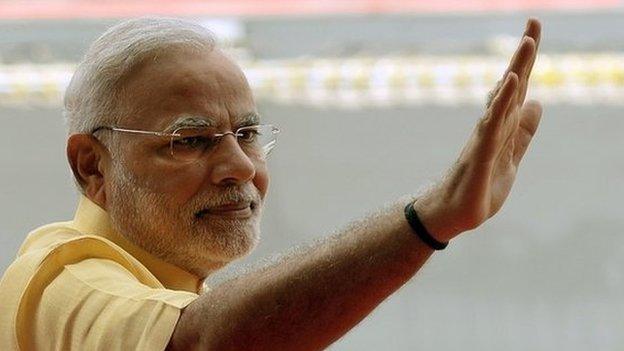The Chinese firms opening factories in India
- Published
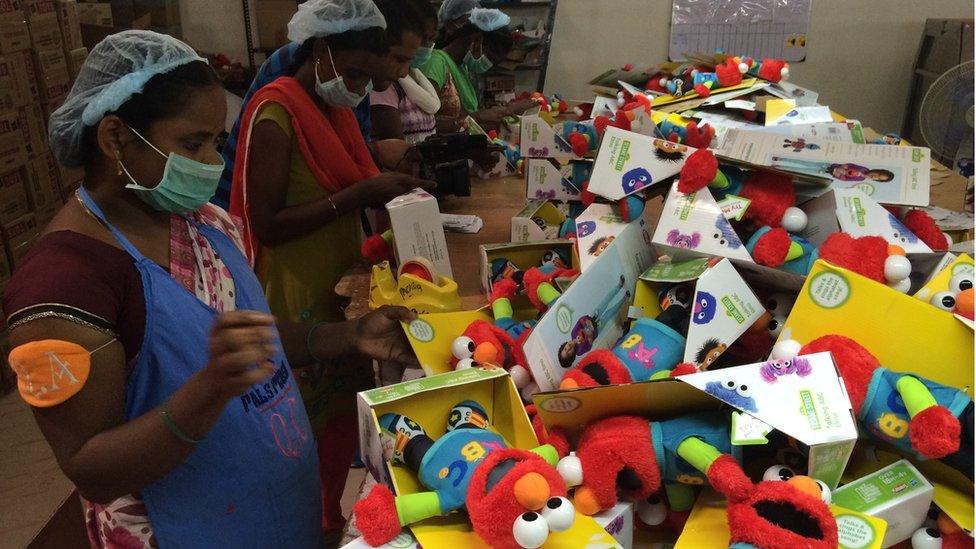
These soft toys, made in an Indian factory by a Chinese firm, will be exported to the US
Bright red Elmo stuffed toys are everywhere. Some are being sewn, others are having their batteries tested, and some more are being packed into neat little boxes.
The toys, based on the character from the TV show Sesame Street, are, as is often the case, being made by a Chinese firm for export to the US.
What's unusual however, is that this factory isn't in China, but in rural Andhra Pradesh, in southern India.
It is one of more than 100 businesses in the Sri City Industrial hub - many of them Chinese - attracted by the Make in India campaign.
Launched by Prime Minister Narendra Modi last year, the ambitious campaign aims to turn the country into a global manufacturing hub.
As part of the scheme, the government has said it will incentivise foreign companies to manufacture in India.
"In plain terms, if you invest $100 [£65] here, we will give you $25. Then state incentives are also available," Union Minister Ravi Shankar Prasad said recently.
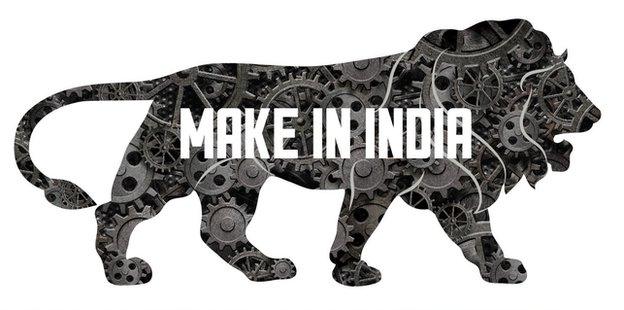
The "Make in India" campaign aims to turn the country into a global manufacturing hub
The founder of the industrial zone, Ravindra Sannareddy, says the incentives make India a very attractive manufacturing base for Chinese companies.
"A lot of companies from China, which traditionally used to export their products to India, are now taking advantage of these incentives to come to India, put their manufacturing facilities here, and cater to the demand here," he says.
It's not just the financial benefits which are attractive to foreign firms.
The industrial hub is situated way out in the countryside, but finding labour has been easy.
Mr Reddy estimates that they have at least 200,000 employable youth in the surrounding villages.
You can see a lot of them working in factories here.
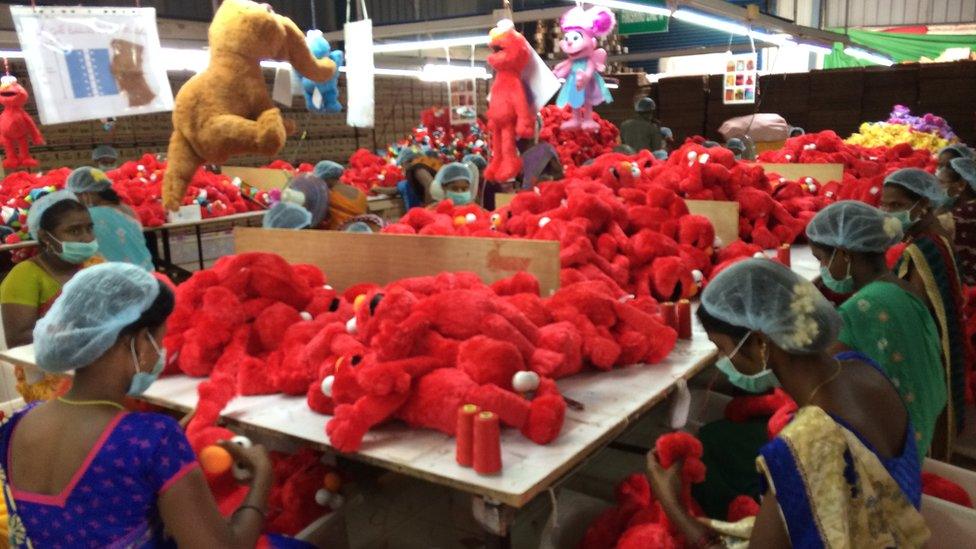
Two thirds of India's population is under 35, making it's easy for foreign firms to find staff
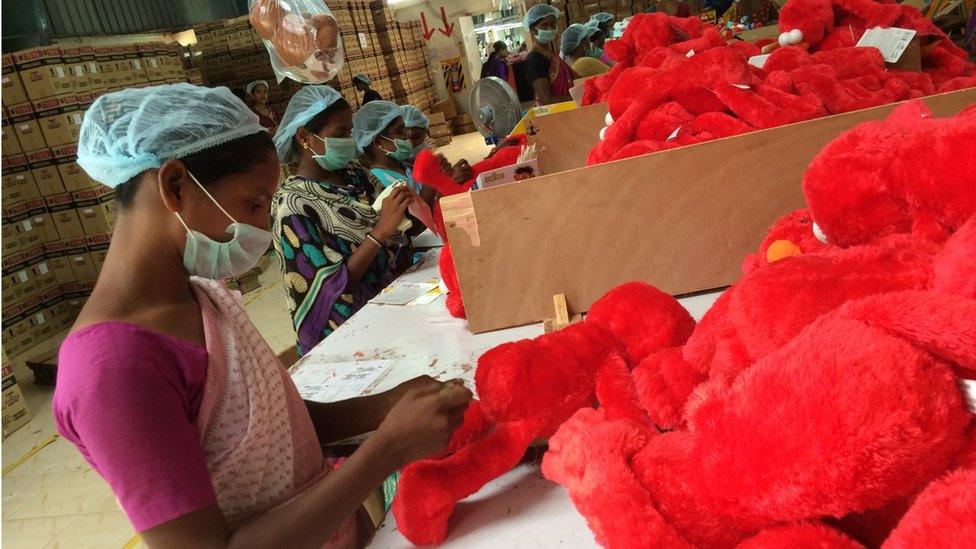
For Indians living in rural areas, the factories offer an opportunity to find work without moving
Seema Nehra, director at Pals Plush, which makes toys here for the likes of Universal Studios, Walmart and Pottery Barn Kids, says around 80% of its staff are first time workers and are women.
"They are from rural areas, and we train them initially. But they are very comfortable with the sewing and finishing works of toy making," she says.
That is what India is selling to the world - its young, cheap workforce. Two thirds of India's population is under 35, and in the next decade, India will have more people of working age than anywhere else.
The various attractions have persuaded manufacturing giant Foxconn, best known for making Apple iPhones, and which already employs over a million people in China, to develop at least 10 factories in India - investing $20bn.
Closer to customers
Foxconn began assembling devices here for a number of Chinese brands, including Xiaomi, less than a year ago, and says the cost benefits are huge.
"In our kind of business we work on wafer thin margins," says Manu Jain, Foxconn's head of operations for India.
If we import goods from abroad - from any other country like China - the lead time for us to order and then get these goods is four to five weeks.
"When we make the same goods in India the lead time gets reduced to two to three weeks and that is a massive saving. In order to be closer to customers and for supply chain benefits we decided to make phones in India."
Chinese smartphone brands are probably the most visible Chinese products being made in India.
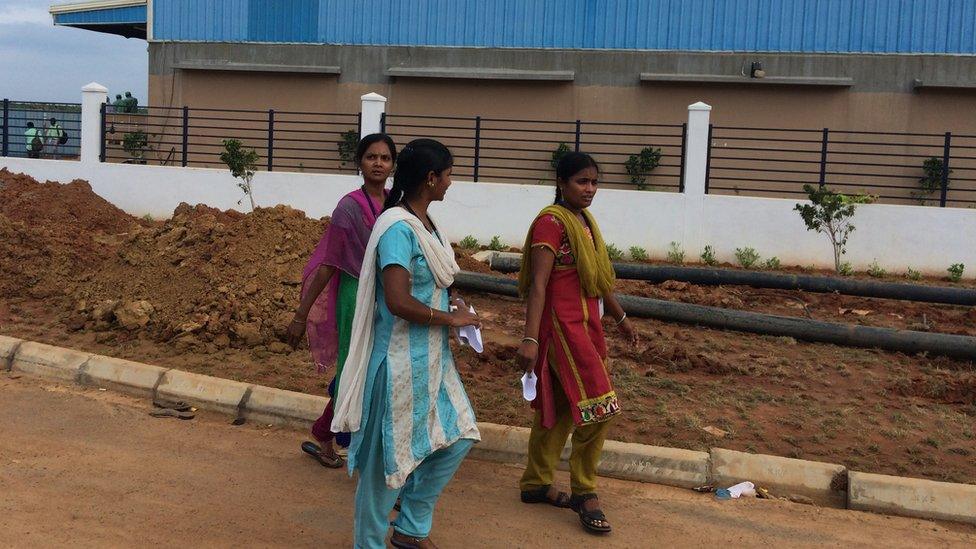
Foxconn says there are huge cost benefits to manufacturing in India
In the past year, as well as Xiaomi, OnePlus, Lenovo, Gionee and Asus have all announced that they are planning to "Make In India".
Manufacturing firm Xi'an LONGi Silicon Materials Corporation is the latest company to sign up. It has promised to invest an initial $250m in building a factory in Andhra Pradesh.
Long term, it has said it plans to invest six times this initial sum, eventually creating 5,000 jobs.
"India is an exciting market of the future and we don't want to miss out," says Baoshen Zhong, chairman of LONGi.
"To take advantage of this market we need to make sure we have our foot in here early on."
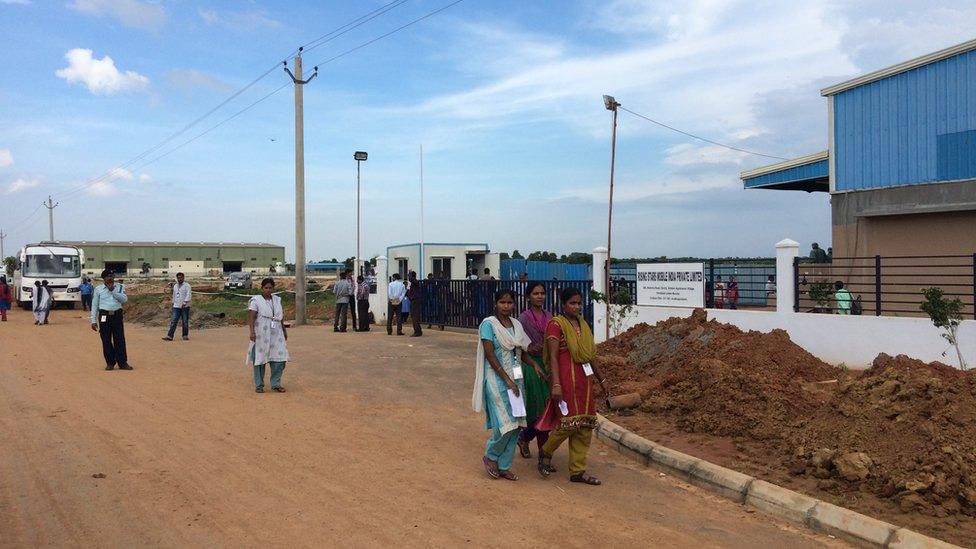
Some Chinese expats have complained that there is not enough to do in rural Andhra Pradesh
Wooing the Chinese is also important to India, which needs to create more than 100 million jobs in the next decade.
According to the World Bank, fast-rising wages in China means companies are looking elsewhere - costing the Asian giant 85 million manufacturing roles - something India is hoping to take advantage of.
Quality of life?
But while cheap and abundant labour is bringing them here, some Chinese firms say the Indian government still needs to cut red tape.
"I wish the government here was a lot more efficient. It needs a lot of improvement," says Chen Zhaofeng, director of ZTT India, which makes fibre-optic-communication and power-transmission products.
As the number of Chinese expats increase, there is one other common concern - quality of life.
Many wish there were more entertainment venues, supermarkets or global restaurants here like in major cities.
Those concerns aren't enough to deter Chinese companies building more factories here
But if India's creaking infrastructure is not overhauled, it may lose out on a long-term opportunity to grab more business from its biggest Asian rival.
- Published16 October 2015
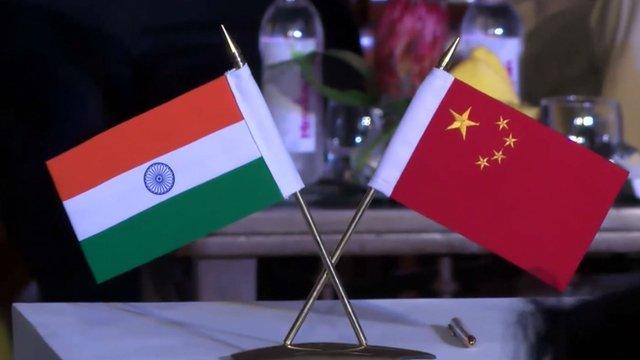
- Published25 September 2014
